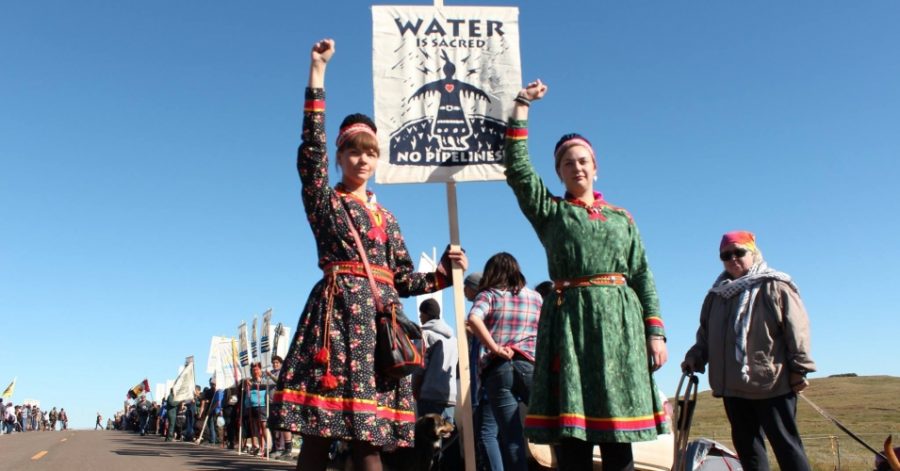Victory in protest against the Dakota Access Pipeline
Two women protesting the pipeline
Something incredible happened at Standing Rock. On Sunday afternoon, the U.S. Army Corps of Engineers legally blocked the construction of the Dakota Access Pipeline, denying it a needed easement to drill beneath the Missouri River.
The corps will now investigate and write an environmental-impact statement, a roughly two-year process that will assess the risks of building a pipeline so close to the Standing Rock Sioux’s water supply. It will specifically examine whether the pipeline should be moved or cancelled altogether.
In doing so, the Corps recognizes the demands of the “water protectors,” the indigenous and non-native people who have assembled in protest camps at Cannon Ball, North Dakota, since the spring.
Energy Transfer Partners, the company building the pipeline, calls the decision made a political action by an administration which has abandoned the law for political correctness.
Upon completion, the $3.7-billion Dakota Access Pipeline would stretch more than 1,100 miles, linking the oil fields of North Dakota’s Bakken formation with a river terminal in southern Illinois.

Standing Rock victory in North Dakota
The company aimed to avoid the battle from the public that doomed the Keystone XL pipeline by running the Dakota Access Pipeline entirely across private land. This freed the firm from seeking public permits in some states. However, the pipeline still required the federal government’s permission to drill beneath the Missouri River, a federal waterway.
The land that the Dakota Access pipeline crosses today is considered to be private land, but it was granted to Sioux tribes. The result of this treaty remains unclear. Since the middle of the 20th century, the U.S. government has attempted to reduce broken treaties with all Native nations by compensating them for lost land. The Sioux have declined to accept any payment, leaving a payment of one billion dollars in federal court.
If the Sioux accept the U.S. government’s payment, they feel it would effectively give up the treaty claims. Energy Transfer Partners could correctly say they were building it on private land, but the Sioux could correctly refer to the contested ground as tribal or treaty land, referencing the agreement.
Though it’s not really at issue with the pipeline, it’s not entirely clear why the Supreme Court should get to rule on the case. Neither of the U.S. government’s treaties with the Sioux recognized the authority of the Supreme Court.
Over the summer, Energy Transfer Partners and the Army Corps of Engineers said that the Standing Rock Sioux did not respond to their attempts to identify cultural sites near the pipeline. The tribe argued that the Corps’ requests were always limited in range.
The story of the pipeline will now likely enter a new phase. The environmental-impact statement will take about two years to complete; no matter what it finds, it will almost certainly be followed by legal disputes about what it requires.
Because of an earlier Obama administration regulation, the Army Corps must also now consider how the pipeline will worsen climate change.
It’s also unclear whether Energy Transfer Partners will completely stop building the pipeline. The pipeline stands completed at either end of the Missouri River.
The question I have is where will all this energy from the organizing and the activism go?

First-year writer on The Quill Staff. "This ain't my first rodeo"- Lucas Downey









